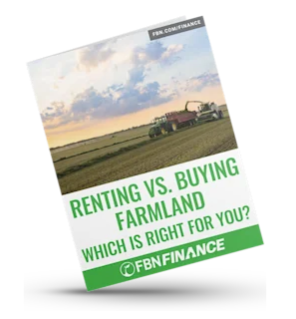Deciding to Rent vs. Buy Farmland: How to Calculate Your Cash Rent Equivalent (CRE)
Tuesday, February 25, 2025
Reference: Farmers Business Network
 Calculating your cash rent equivalent (CRE) can help you determine whether it’s the right time for you to make a farmland purchase by helping to compare the cost of land ownership to the cost of renting.
Calculating your cash rent equivalent (CRE) can help you determine whether it’s the right time for you to make a farmland purchase by helping to compare the cost of land ownership to the cost of renting.| Trying to decide whether buying or renting farmland is the right fit for your ag operation? Check out Renting vs. Buying Farmland: Which Is Right for You?, a free educational guide from FBN Finance. What Is a Cash Rent Equivalent (CRE)? |
 |
Your CRE is the total of your land loan payments (both principal and interest) plus your real estate taxes, divided across your total acreage.
How Can a CRE Inform Your Rent vs. Buy Decision-Making?
If your calculated CRE is notably higher than local farmland rental rates, it likely means that renting land is the right move for your operation.
On the other hand, if your CRE is substantially lower than local farmland rental rates, it may make more financial sense to purchase local land for an operational expansion rather than renting.
It’s important to note that your CRE only includes your owned acres and how much it costs you to own them annually. It does not include additional operating expenses like inputs or labor, land improvement costs, rental costs for any additional land you may operate, or personal/family financial obligations. Make sure to also consider these critical factors before making a land purchase or rental decision.
How to Calculate Your Cash Rent Equivalent (CRE)
To calculate your CRE, use the following equation:
Read more
Sign up to stay connected
- News
- Property Alerts
- Save your favourite properties
- And more!
Joining Farm Marketer is free, easy and you can opt out at any time.
